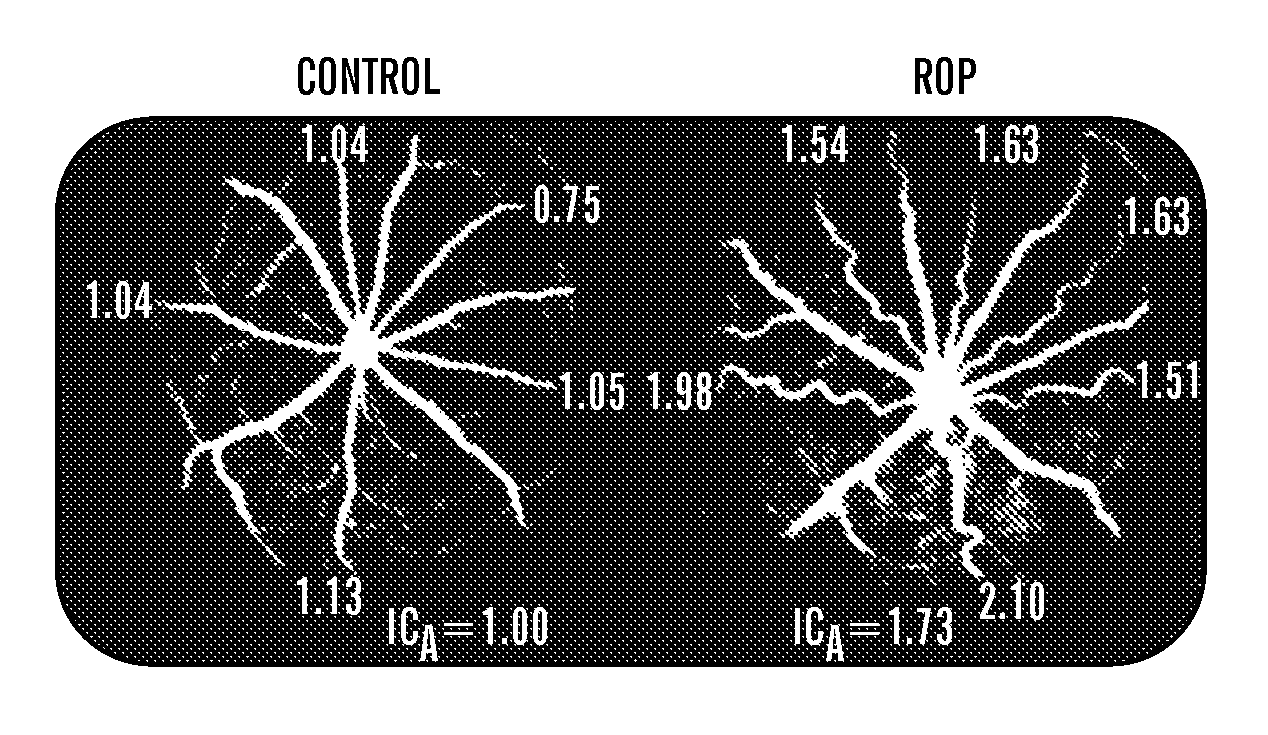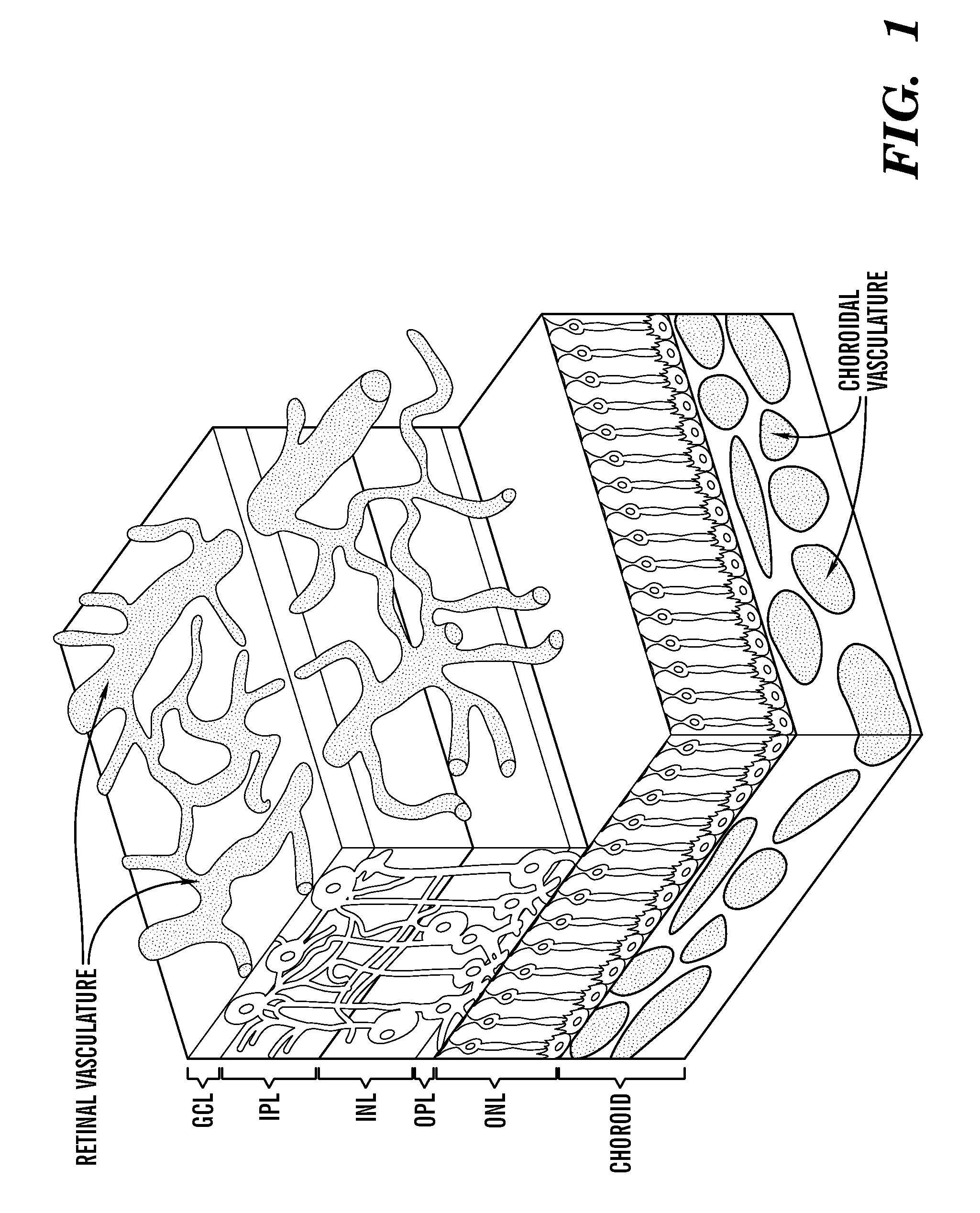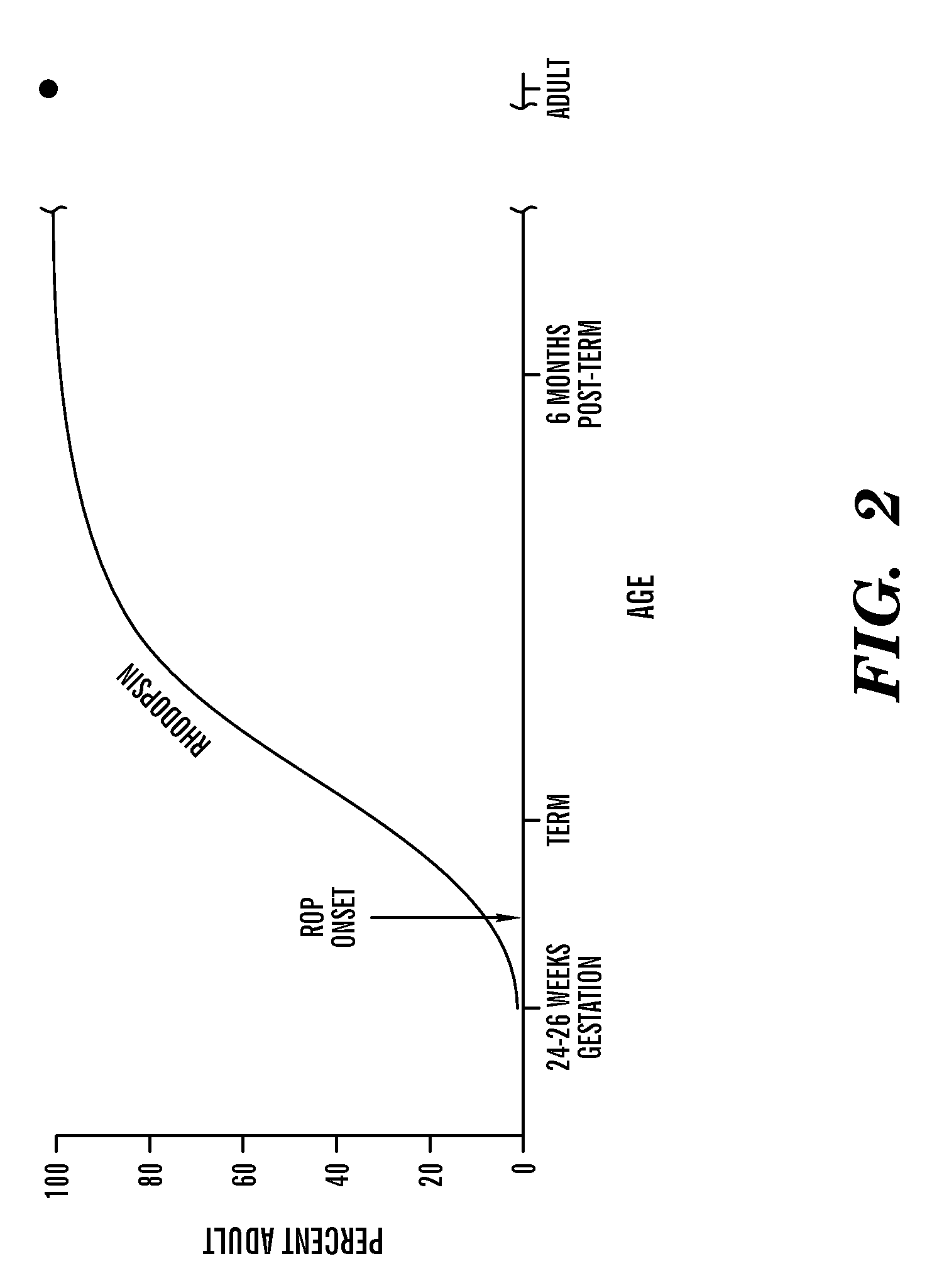Protection of neural retina by reduction of rod metabolism
a technology of rod photoreceptors and neural retinas, applied in the direction of biocide, amide active ingredients, drug compositions, etc., can solve the problems of retinal detachment, patients at greatest risk of rop, growth problems, etc., and achieve the effect of suppressing the energy demand of rod photoreceptors
- Summary
- Abstract
- Description
- Claims
- Application Information
AI Technical Summary
Benefits of technology
Problems solved by technology
Method used
Image
Examples
example 1
Reduction of Oxygen-induced Retinopathy Using N-Retinylacetamide.
Purpose:
[0121]Rats with oxygen-induced retinopathy (OIR) are a common model of human retinopathy of prematurity (ROP). Both OIR and ROP are characterized by abnormal retinal vasculature and by lasting dysfunction of the neural retina. Recent findings in OIR rats imply a causal role for the rods in the ROP disease process. However, experimental manipulation of rod function is necessary to establish this role conclusively. The retinoid composition N-Retinylacetamide (all trans), of chemical composition C22H33NO “the drug” was administered in the rat OIR model of ROP.
Methods:
[0122]OIR was induced in four litters of Sprague-Dawley pups (N=24) by exposure to alternating periods of 50% and 10% oxygen from the day of birth (P0) to P14. The light cycle was 12 hr light (10-30 lux) and 12 hr dark; the light-to-dark transition coincided with each oxygen alternation. For 15 days beginning P7, within one hour of this transition, th...
example 2
Down-regulation of the visual cycle favorably alters rod function in a rat model of ROP.
[0125]The effects of N-Retinylacetamide (Ret-NH2), a non-carotenoid vitamin-A derivative visual cycle modulator (VCM), were studied on rats with oxygen-induced retinopathy (OIR). Both OIR and ROP are characterized by lasting dysfunction of the neural retina and by abnormal retinal vasculature. Since the early status of the rods predicts blood vessel outcomes (J. D. Akula, et al., Invest Ophthalmol Vis Sci (2007) 48: 4351), it was suspected that the blood vessel abnormalities would also be altered.
[0126]Retinopathy was induced in Sprague-Dawley pups (N=46) by exposing them to alternating 24 hour periods of 50±1% and 10±1% oxygen from the day of birth to postnatal day (P) 14 as shown in FIG. 1. The light cycle was controlled at 12 hours 10-30 lux and 12 hours dark, except during test days when constant darkness was maintained. The light-to-dark transition was timed to coincide with each oxygen alte...
PUM
| Property | Measurement | Unit |
|---|---|---|
| Energy | aaaaa | aaaaa |
Abstract
Description
Claims
Application Information
 Login to View More
Login to View More - R&D
- Intellectual Property
- Life Sciences
- Materials
- Tech Scout
- Unparalleled Data Quality
- Higher Quality Content
- 60% Fewer Hallucinations
Browse by: Latest US Patents, China's latest patents, Technical Efficacy Thesaurus, Application Domain, Technology Topic, Popular Technical Reports.
© 2025 PatSnap. All rights reserved.Legal|Privacy policy|Modern Slavery Act Transparency Statement|Sitemap|About US| Contact US: help@patsnap.com



